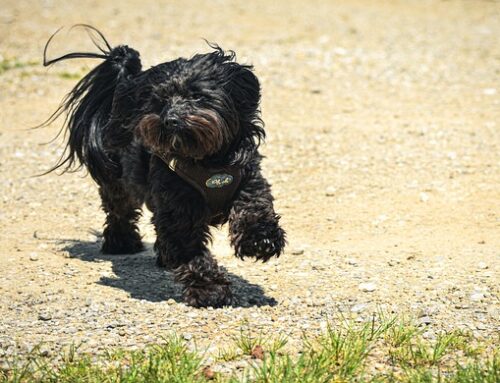Understanding Dog Collars and Harnesses: A Detailed Look

Selecting the right collar or harness for your dog is essential for their comfort and safety. With so many options available, you should consider your dog’s size, breed, behavior, and specific needs when making your choice. It’s also important to ensure the collar or harness properly fits your pup. Ensuring a proper fit will provide you with peace of mind, knowing your puppy won’t slip out.
The most common type of dog collar is the flat collar. Flat collars are ideal for dogs that don’t pull excessively. A flat dog collar is a basic collar made of a flat strip of material, typically nylon or leather, with a buckle or snap closure. These collars typically have a ring on them to attach identification tags. Flat collars are easy to put on and take off, making them suitable for everyday wear. To ensure a proper fit for this popular dog collar, it’s important to only leave two fingers’ worth of room.

Martingale collars are a specialized type of collar that has an extra loop that tightens when a dog pulls; it’s like a mix between a standard flat and choke collar. These collars are popular for dogs that are escape artists in traditional collars. The limited slip action of the collar allows for gentle control without the need for excessive force. It’s important to have these collars properly adjusted to prevent discomfort and ensure your dog’s safety.
Step-in harnesses are excellent choices for any dog that doesn’t like to have items placed over its head. A step-in harness is a type of dog harness that’s designed to be easily stepped into and secured around the dog’s chest and shoulders. Step-in harnesses distribute pressure across the chest and shoulders instead of concentrating it on the neck, reducing the risk of injury or discomfort. Make sure the straps are properly adjusted to prevent the harness from slipping or causing chafing.

The front-clip harness is a perfect choice for any pup that is prone to pulling. These harnesses encourage dogs to redirect their attention when pulling. The harness typically consists of adjustable straps that encircle the chest and shoulders. Most front-clip harnesses have adjustable straps, allowing for a customized fit. Look for front-clip harnesses made from sturdy materials that can withstand regular use.
Back-clip harnesses are a type of harness that features the attachment point for the leash located on the dog’s upper back. This allows for pressure to be distributed evenly across your dog’s chest and shoulders. It’s important that the back-clip harness is not used on dogs who pull excessively. Select a harness with adjustable straps and padding on the chest and shoulders to ensure a customized fit and maximum comfort for your pup.

The no-pull harness is a popular choice for dogs that require additional training or guidance to reduce pulling behaviors. These harnesses typically consist of adjustable straps, a front attachment point, and additional design elements that distribute pressure evenly and discourage pulling. These harnesses allow dogs to move their front legs freely, promoting a more natural walking gait and overall comfort.
With so many options for collars and harnesses, it can be tricky to decide which is best for your pup. In order to make a sound decision, pet parents should pay extra attention to their dog’s behaviors. If you need assistance when selecting the right collar or harness for your pup, the knowledgeable staff at Little Puppies Online is here to help!




